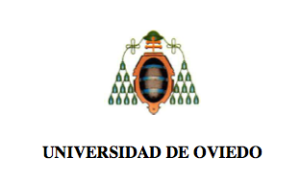As I have mentioned, I was recently traveling around the southeast United States conducting and promoting my research in the area of medical Spanish. Though I had previously worked in the US health system with Latino patients, the opportunity to have contact with such a diverse variety of clinics across almost thirty cities allowed me to reflect more on some of the issues that I had previously dismissed. One of those aspects was the varying degrees of compliance among organizations regarding discrimination and language laws.
During the trip, I spent a good deal of time calling and visiting clinics. Those singled out to be contacted in our study were those that receive a high number of Latino patients (typically > 5% of their patient population being Latino). Due to LEP (Limited English Proficiency) related laws, one would thus expect to find a certain amount of language assistance being provided to that population. However, what I actually encountered was a wide range of familiarity and compliance with those laws. For example, some clinics took every effort to ensure equal care by posting all signs in English and Spanish, offering educational brochures in both languages, implementing a bilingual phone system, contracting bilingual staff, interpreters or language phone line services, and some even went so far as providing assistance programs such as the Navigators, which I wrote about a couple of weeks ago. Amongst the clinics offering at least some amount of language support, the quality of the what was provided ranged from those that pull bilingual staff from other duties to interpret to others that only allow certified interpreters to interact with the patients and do not even let Spanish-speaking doctors use their Spanish with the patients.
In contrast, on the other end of the support spectrum, I came in contact with some clinics and even large hospital systems who, after stating they receive a significant hispanic population, admitted that they do not have interpreters nor bilingual staff but request that the patient bring a friend or family member. Some affirmed that they only contact a professional interpreter in more extreme cases. [For confidentiality reason, the states, counties and clinic names associated with each response are maintained anonymous.] Some of the reasons cited for not providing language support include a recent increase in hispanic population in their area, the unavailability / inaccessibility of adequate language resources, the cost of implementing those services and the uncertainty around what percent of the patient population would need to be Spanish-speaking to require compliance with those laws.
Since the importance of doctor-patient communication and the noxious nature of a language barrier have been proven again and again, it is surprising to still see so much variety between clinics. On speaking with a few medical professionals about the issue, I found that, though most interpreters are very aware of the laws, many medical professionals and even clinic coordinators are not. Some are also confused as to the implications of the law, for example, what is considered adequate language support? Others believed that they were saving money by not complying, when in reality the opposite is often true. For those who run the clinic, the government makes the rules quite clear and even offers videos to explain some of these laws in more detail. Nonetheless, the question remains as to if it would be beneficial to teach medical professionals about these laws in Spanish for healthcare professionals courses. Though part of interpreter training includes learning these laws, it is something it is not something currently taught to medical professionals. This is probably due to the fact that it is the CEOs and clinic managers who make the decisions of what services they offer and also due to the fact that there is scarcely enough time to cover the language and cultural aspects during the course, much less touch on the complexity of the law. Additionally, even if there were time, it would be difficult for many of the professionals to see the point when they would rather their limited time and energy for outside of work education focused on learning to communicate well with the patient. For those reasons, I agree that it is probably not necessary to include this topic in the course, nevertheless, it is important that the instructor have a good idea of the laws in order to better respond to questions and promote abidance. For this reason, in the next post I will briefly discuss the following laws and standards as well as provide links to more information on each.
- Title VI of the Civil Rights Act of 1964 along with the HHS Policy Guidance on how it affects persons with Limited English Proficiency
- HHS Office of Minority Health´s National Standards on Culturally and Linguistically Appropriate Services in Healthcare
- Executive Order 13166









